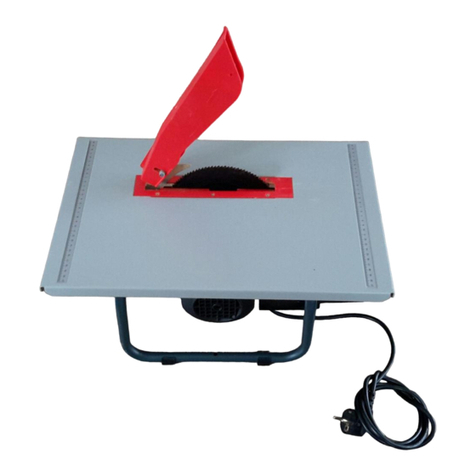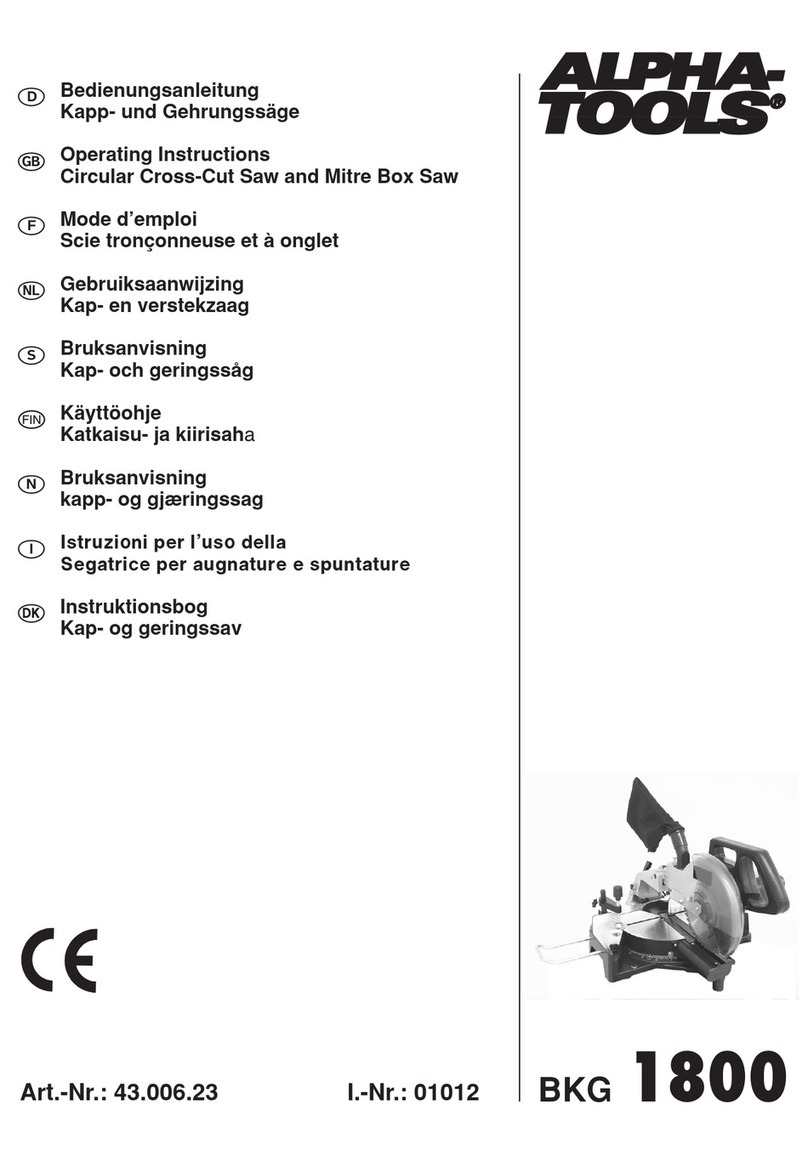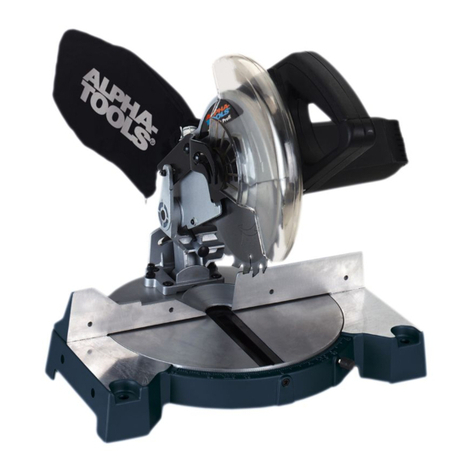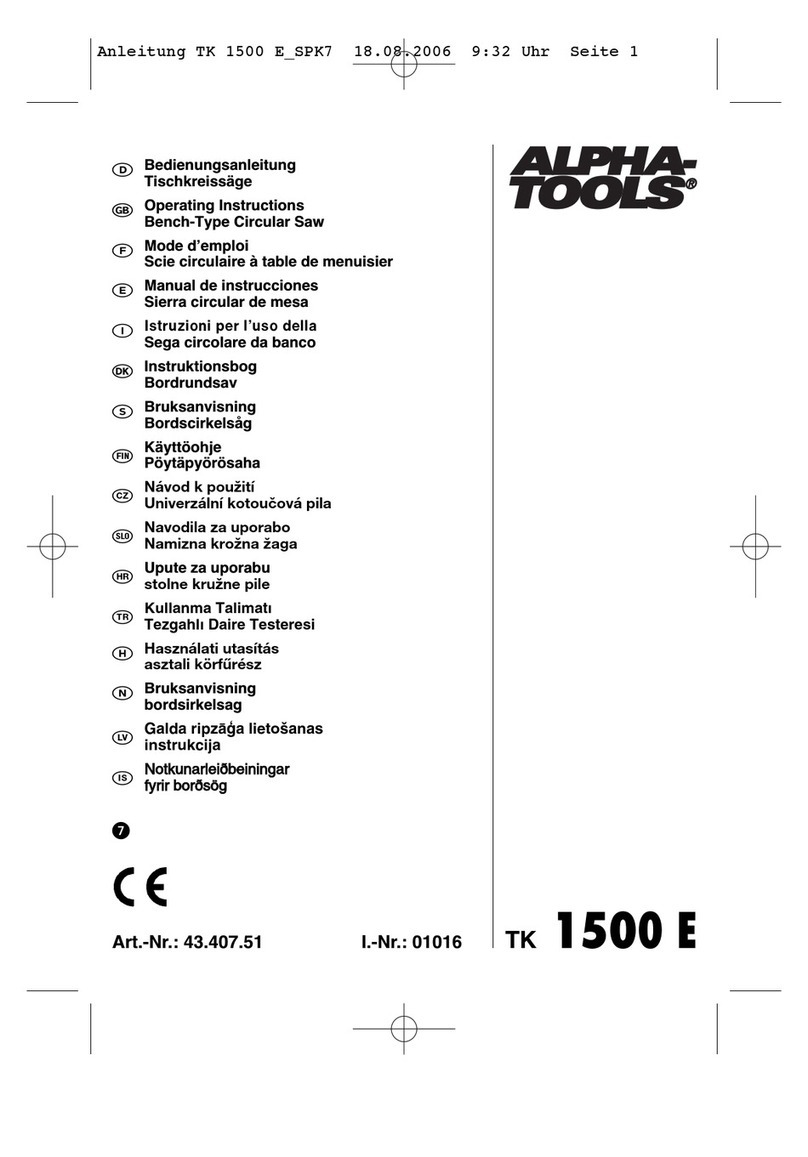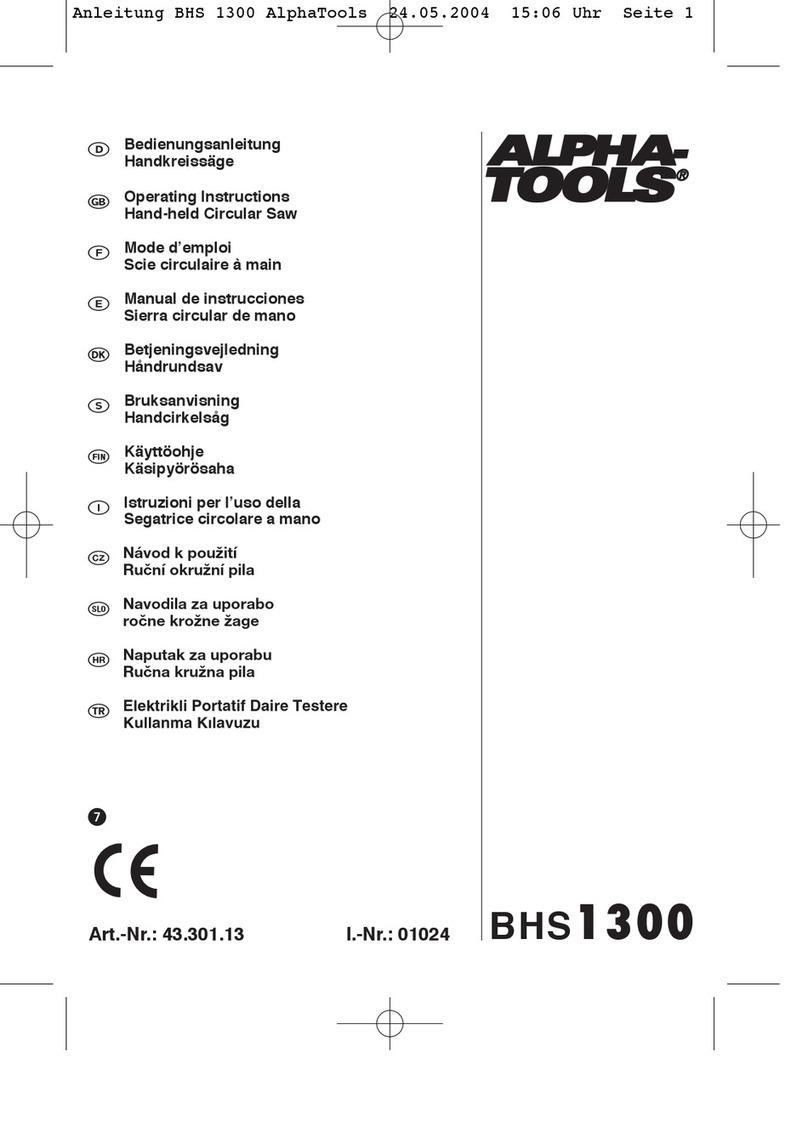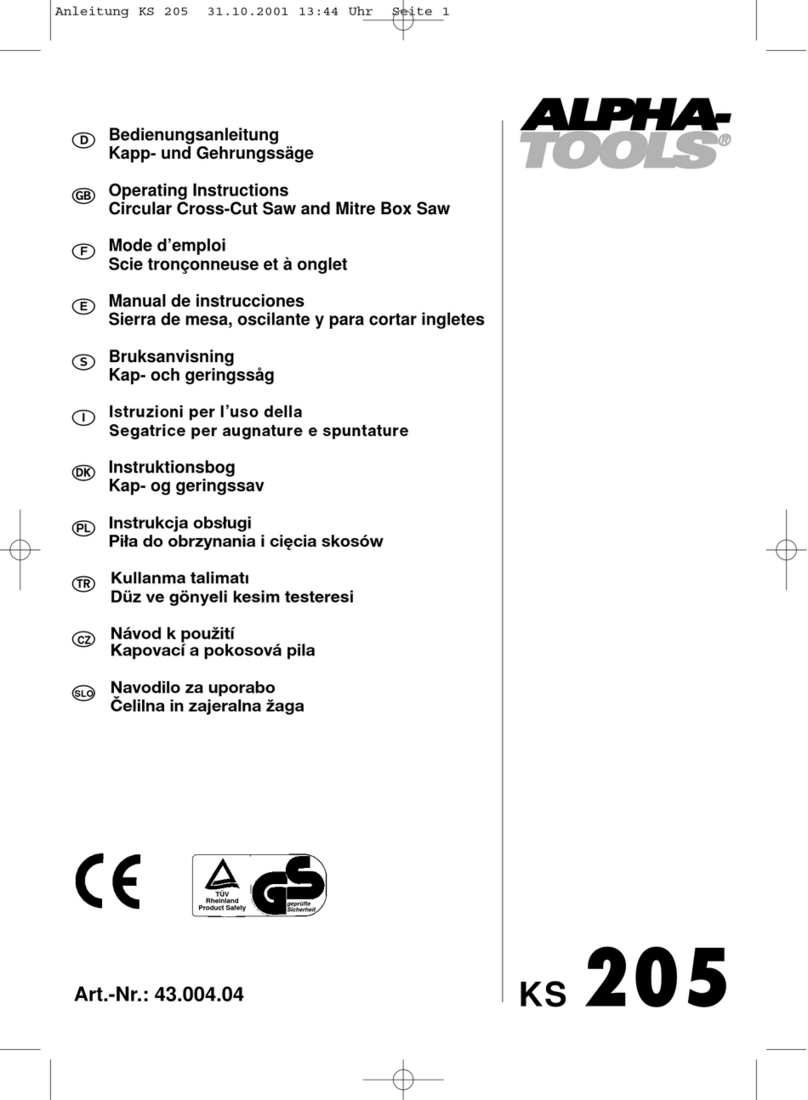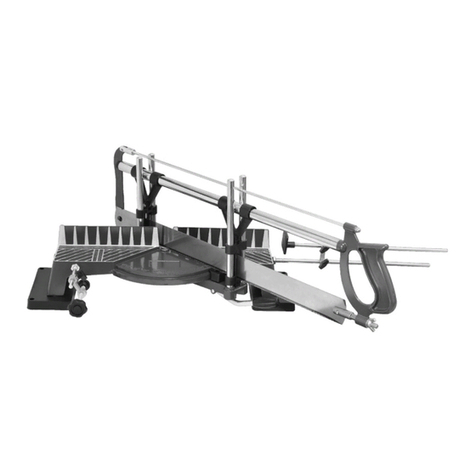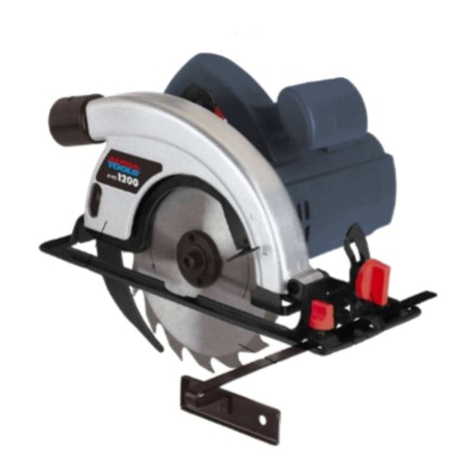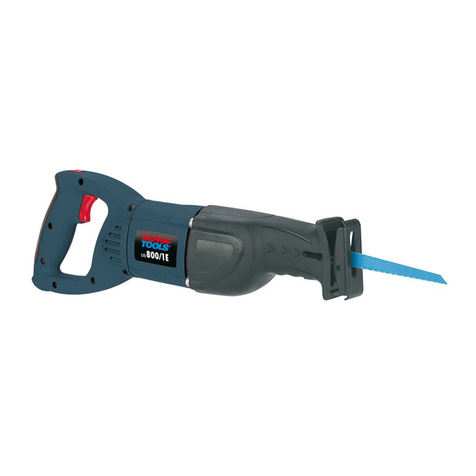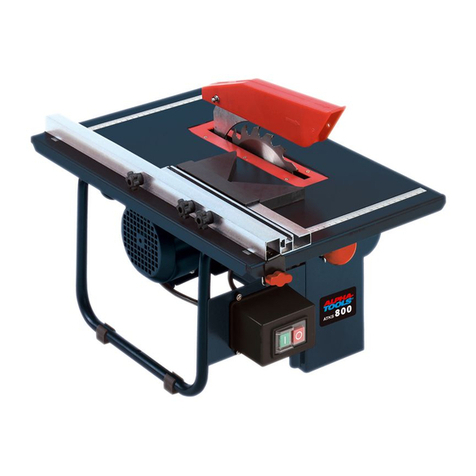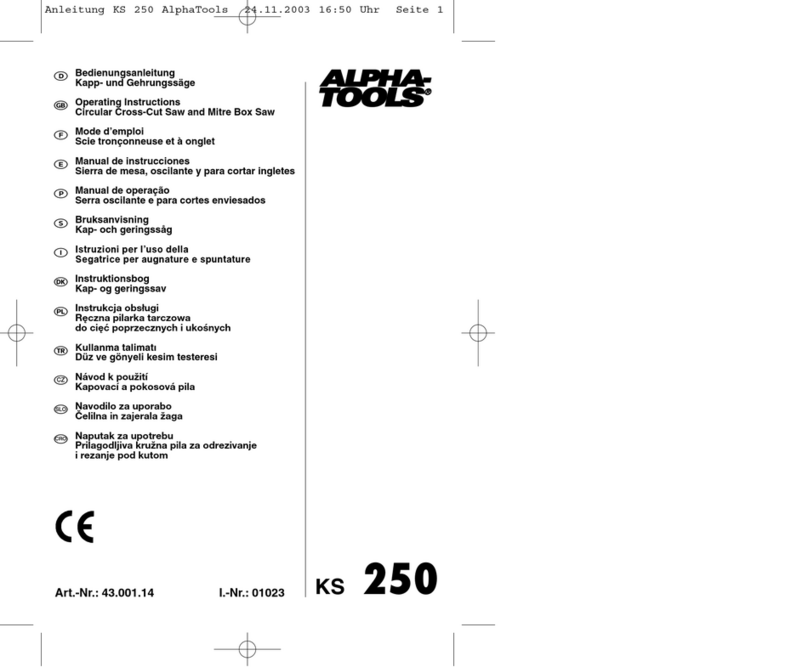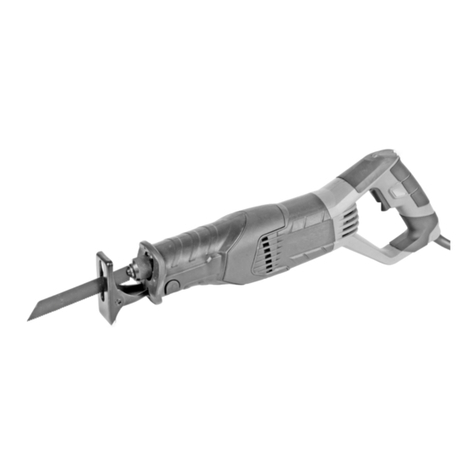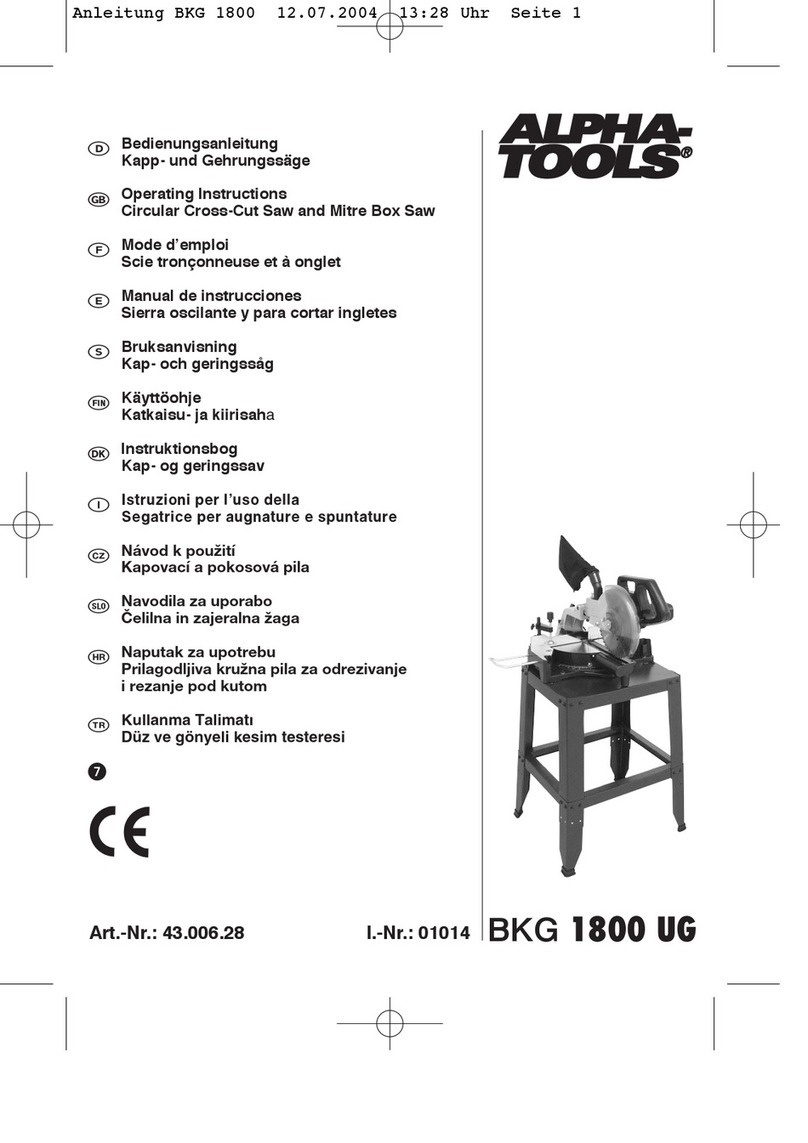7
D
Schwingungsgesamtwerte (Vektorsumme dreier
Richtungen) ermittelt entsprechend EN 60745.
Handgriff
Schwingungsemissionswert ah≤ 2,5 m/s2
Unsicherheit K = 1,5 m/s2
Achtung!
Der Schwingungswert wird sich aufgrund des Ein-
satzbereiches des Elektrowerkzeuges ändern und
kann in Ausnahmefällen über dem angegebenen
Wert liegen.
5. Vor Inbetriebnahme
Überzeugen Sie sich vor dem Anschließen, dass die
Daten auf dem Typenschild mit den Netzdaten
übereinstimmen.
Ziehen Sie immer den Netzstecker, bevor Sie
Einstellungen am Gerät vornehmen.
5.1 Schnitttiefe einstellen (Bild 3)
앬Einstellschraube (3) lösen.
앬Schnitttiefe nach Skala (a) einstellen
앬Bei Holz und Kunststoff sollte die Schnitttiefe
etwas tiefer als die Materialstärke gewählt
werden.
앬Um darunter liegende Oberflächen nicht zu
beschädigen, kann bei Holz und Kunststoff die
Schnitttiefe auch exakt auf die Materialstärke
eingestellt werden. Dies führt allerdings zu einem
etwas unsauberen Schnitt.
5.2 Schnitte anzeichnen (Bild 3)
앬Um Überschnitte zu vermeiden befinden sich an
beiden Seiten der Schutzhaube (4) Indexzahlen
(b), die mit Skala (a) übereinstimmen. Sie zeigen
den Anfangs- und Endpunkt des Schnittes.
앬Schnitte auf dem Werkstück anzeichnen. Bei
einer Form, die kein Rechteck oder Quadrat ist,
Hilfslinien einzeichnen, die die Schnitte im
rechten Winkel schneiden.
앬Gewünschte Schnitttiefe einstellen.
앬Entsprechende Schnitttiefe auf den Seiten der
Schutzhauben suchen.
앬Die hinteren Ziffern der Indexzahlen (b) auf die
Hilfslinie am Anfang des Schnittes ausrichten.
앬Entlang der angezeichneten Schnittlinie
schneiden, bis die Hilfslinie am Ende des
Schnittes unter den vorderen Ziffern der
Indexzahlen liegt.
5.3 Absaugen von Staub und Späne (Bild 4)
Schließen Sie eine Absauganlage oder einen
Staubsauger an Ihr Gerät an. Sie erreichen damit
eine optimale Absaugung von Stäuben und Späne
vom Werkstück.
Die Vorteile: Sie schonen sowohl das Gerät als auch
Ihre eigene Gesundheit. Ihr Arbeitsbereich bleibt
außerdem sauber und sicher.
앬Schließen Sie den Absaugsaugschlauch (10) an
den Staubsauganschluss (6) an.
앬Achten Sie darauf, dass der Pfeil (a) am
kleineren Ende des Schlauches (10) mit der
Aussparung (b) an dem Staubsaugeranschluss
(6) übereinstimmt.
앬Drehen Sie den Absaugschlauch nach rechts bis
er einrastet.
6. Bedienung
6.1 Arbeiten mit der Minihandkreissäge
앬Minihandkreissäge stets mit festem Griff halten.
앬Keine Gewalt anwenden!
Mit der Minihandkreissäge leicht und gleichmäßig
vorrücken.
앬Das Abfallstück sollte sich auf der rechten Seite
der Minihandkreissäge befinden, damit der breite
Teil des Auflagetisches auf seiner ganzen Fläche
aufliegt.
앬Wenn nach vorgezeichneter Linie gesägt wird,
Minihandkreissäge an der entsprechenden Kerbe
entlangführen.
앬Kleine Holzteile vor der Bearbeitung fest
einspannen. Nie mit der Hand festhalten.
앬Sicherheitsvorschriften unbedingt beachten!
Schutzbrille tragen!
앬Verwenden Sie keine defekten Sägeblätter oder
solche, welche Risse und Sprünge aufweisen.
앬Verwenden Sie keine Flansche/Flanschmuttern,
deren Bohrung größer oder kleiner ist als
diejenige des Sägeblattes.
앬Das Sägeblatt darf nicht von Hand oder durch
seitlichen Druck auf das Sägeblatt gebremst
werden.
앬Die Schutzhaube darf nicht verklemmen und
muss sich nach abgeschlossenem Arbeitsgang
wieder in der Ausgangsposition befinden.
앬Vor der Verwendung der Minihandkreissäge bei
herausgezogenem Netzstecker die Funktion der
Schutzhaube prüfen.
앬Vergewissern Sie sich vor jedem Einsatz der
Maschine, dass die Sicherheitseinrichtungen wie
Schutzhaube, Flansche und Verstellein-
richtungen funktionieren bzw. richtig eingestellt
und festgestellt sind.
